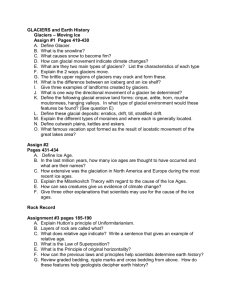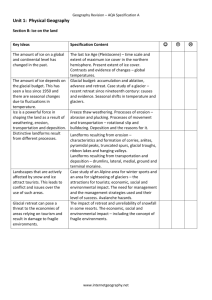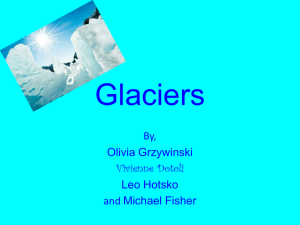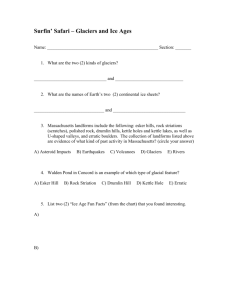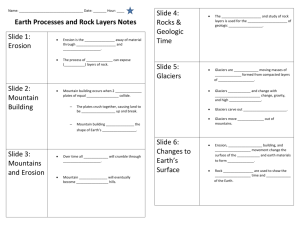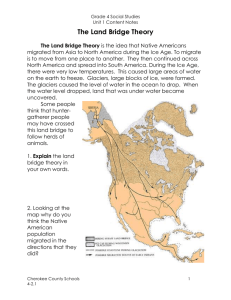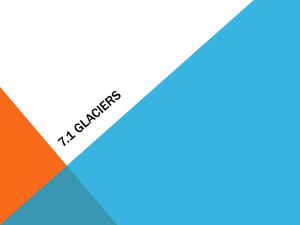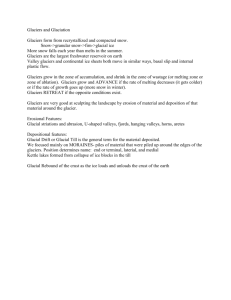Chapter 3 – Agents of Erosion and Deposition
advertisement
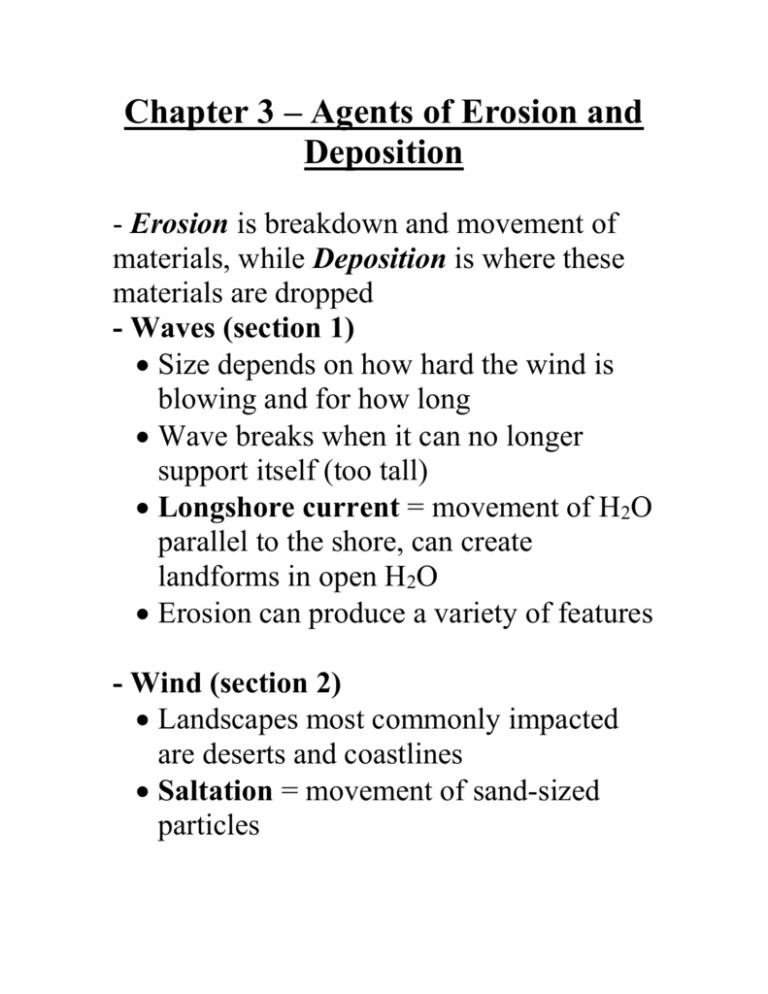
Chapter 3 – Agents of Erosion and Deposition - Erosion is breakdown and movement of materials, while Deposition is where these materials are dropped - Waves (section 1) Size depends on how hard the wind is blowing and for how long Wave breaks when it can no longer support itself (too tall) Longshore current = movement of H2O parallel to the shore, can create landforms in open H2O Erosion can produce a variety of features - Wind (section 2) Landscapes most commonly impacted are deserts and coastlines Saltation = movement of sand-sized particles Deflation = lifting and removal of fine sediment Abrasion = grinding and wearing down of rock surfaces by other rock or sand Dunes = mounds of wind-deposited sand, common in deserts and along shores Loess = thick deposits of windblown, fine-grained sediment, far away from source - Ice (section 3) Major contributor = Glaciers 2 kinds of glaciers 1) Alpine – mountainous areas 2) Continental – large ones that can cover entire continents - largest kind is a cont. ice sheet Antarctica 91% of all glacial ice Glaciers can move downhill when thickness and slope are right - move by 2 ways: ice @ bottom melts & solid ice crystals sliding over each other Landforms carved by glaciers are different based on the kind of glacier Glaciers pick up rock material and move it away, creating striations in the process Glacial drift all the material picked up is deposited when they melt 1) Stratified drift – H2O sorts and deposits it 2) Till – directly by the ice as it melts (unsorted = all sizes) - Gravity’s effect (section 4) Angle of Repose = steepest angle at which loose material will NOT slide Mass Movement = movement of any material downslope Two kind M.M. 1) Rapid 2) Slow Rapid examples 1) Rock fall 2) Landslide 3) Mudflow 4) Lahars Slow Creep


